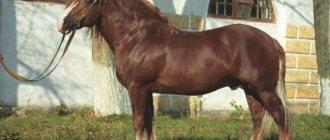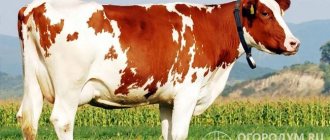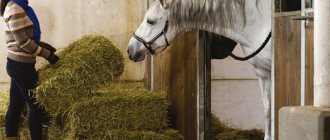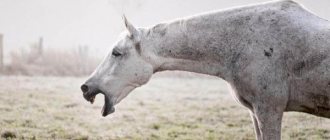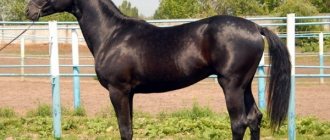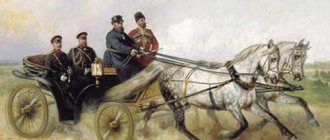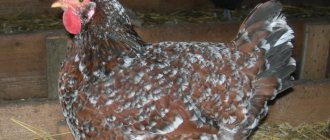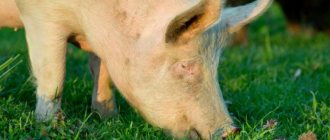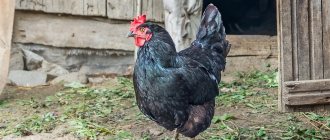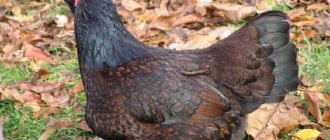Some historical facts
The country in which the tribe appeared is Holland. An ancient historian named Tacitus wrote in his manuscripts about the Frisian horse tribe of those times, it says that they are strong, powerful, but slightly ugly. Through evolution and hundreds of years, the royal horses were ennobled and aesthetically improved through natural experiments in crossbreeding. The Middle Ages knew this genus of animals as heavy horses that participated in battles, were not afraid of anything and were very large individuals in comparison with other breeds. Such horses were previously used for crusades. After historical events and campaigns, eastern horses also contributed to the Friesian category.
During the times of superiority and prosperity of Ancient Rome, a subspecies of horses of the Friesian category made their contribution to horse breeding, and it was they who entered the detachment of Roman legionnaires. A little later, after the departure of the Romans, the Frisians filled and appeared in the Norwegian lands and in the vastness of England, with the help of trade routes. In those lands, the subspecies was very actively crossed with local horses to improve the qualities of the animals. A smaller copy of the Friesian horse lives in Great Britain; such horses are called ponies because they are not very tall. This breed is called Gudbrandsdal, it is a Norwegian representative, but in the UK, these are Dale and Fell ponies. The Friesian breed is also considered the parent of the Shire tribe.
For about 80 years, starting in 1568, the Friesian breed was influenced by other tribes, which made a great impact. Thus, the Andalusian breed was able to give majesty to the horse. At the same time, the rod was increasingly used as a carriage house, since it was not needed by knightly cavalry and Andalusian horses were used under saddle.
The Baroque times are no less significant for the subspecies and are distinguished by the fact that the tribe became royal. On it, kings and nobles went out in parades, and were like decoration. Several years have passed since Friesian horses fell into the hands of ordinary people. The second half of the 19th century is characterized by a decline in the number of the subspecies. Friezes could not compete with other species that were bred for speed. Thus, there were fewer and fewer stallions and in 1913 there were only 3. But fortunately the breed was preserved.
The year 1965 is famous for the fact that breed lovers managed to breed even more horses from a population of 500 to propagate the breed. Because in the 60s there was a crisis for the breed and they began to eliminate it again.
Today, the interest of many people in the breed has grown significantly. Such horses perform in shows, circus arenas, etc. The Netherlands uses friszes to open the session of parliament, and friszes also represent official visits of the king and his family. In the West, horses are used in carriage sports.
History of the Friesian breed
The Friesian horse breed is one of the oldest in Europe. She was born in one of the northern provinces of Holland - Friesland or Frisia. Thanks to excavations, the remains of ancient horses were discovered, which are considered the ancestors of the present-day Frisians.
The basis of the appearance of the modern frieze was formed more than seven centuries ago, but initially these were still different horses. Previously, the requirements for these animals were different from modern ones.
What was needed were strong, hardy, efficient, albeit unsightly, horses. Priorities were set, and Friesian horses were the best suited for plowing and war - the main occupations of that time.
The hundred-year wars throughout Europe made their own adjustments over time. The standard of living and areas of activity changed, knightly tournaments became popular, and heavy carriages appeared as transport.
More attention was now paid to the external characteristics of the breed; unsightly and short horses no longer corresponded to tastes. But, thanks to the Crusades, beautiful horses were brought from the east - noble and graceful.
During the conquest of the Netherlands by Spain, from 1569 to 1648, the blood of the Frisians was infused with the blood of Barbary and Andalusian horses, which made the breed powerful, majestic and trainable.
Although the Frisians were not purebred trotters, it was among them that individuals capable of briskly trotting for a long time began to appear most often. These were beautiful and energetic horses, now capable of not only walking in harness, but also under saddle.
Their noble bearing, strength and endurance came in handy for ceremonial processions. To this day, friezes are a decoration of the Golden Carriage for Queen Elizabeth.
But, the times of kings and nobility have passed, and all the paraphernalia associated with that luxury has become unnecessary. Ordinary people again began to need ordinary working horses, without pretensions to beauty and breed.
And only thanks to sincere connoisseurs, the Friesian horse has been preserved as a piece of history and a national treasure of the Netherlands. In 1879, a stud book was formed. Today there are more than 60 thousand individuals, half of which live in Holland.
Friezes in the service of man
The Friesian horse breed was saved due to increased interest and attention in equestrian sports. Such qualities as intelligence, friendliness, majesty, and nobility of appearance, which are inherent in many individuals belonging to the breed, have become in demand. Now Friesians are used very widely. They star in films and perform in the circus arena. These animals are used for horse riding. Their calm disposition will appeal to riders who have only a little experience in equestrian sports. The Friesian horse takes an active part in many equestrian sports, such as driving, dressage and eventing.
Breeding work carried out in the modern world is aimed at enhancing sporting qualities. The first place is given to a good-natured character, an elegant physique and a quick mind. Today, the population of this breed has been completely restored. All Friesian horses must be registered in a stud book, divided into sections. Each of them has its own characteristic color for registration forms. This will allow you to determine the pedigree status of a stallion or mare, even in the absence of knowledge of the language.
Current state of the breed
Today, the range of uses of Friesian horses is wide and varied: from sports and circus to entertainment and games. More and more people are getting involved in driving competitions, participating in eventing and dressage, so breeding work is aimed at breeding individuals with enhanced athletic qualities. It is important that the frieze does not lose its elegance, intelligence and light character.
According to the Royal Friesian Studbook (KFPS), there are currently 60,000 Friesians in the world, with more than half of the population in the Netherlands. Absolutely all horses are entered into one of the sections of the stud book in the city of Drachten at the company office. Each section has its own color of forms, by which you can determine the status of a stallion or mare even without knowing the language. In another 11 countries of the world there are branches that have the right to issue documents, conduct assessments, and select young animals. The selection of mares and stallions for breeding work is very strict. In addition to the provenance requirements, horses must demonstrate their working qualities by successfully passing the ke-rung test . Natural qualities are very important:
- weight,
- height,
- character,
- measurements.
According to practice, on average, no more than a hundred individuals out of a thousand are awarded producer rights.
KFPS also records every mating. A newborn foal must be implanted with a chip with a code within a year.
KFPS has developed clear rules for registering and purchasing Friesian horses, taking into account how important literacy is in carrying out breeding work. Animals are selected with certain characteristics based on their intended use. When purchasing a Frieze, you should make sure that it has a pedigree and a passport, and the microchip numbers in both documents must match the chip on the horse’s neck.
KFPS member countries have their own national associations. In Russia, this is the NP “Breeders and Lovers of Friesian Horses”.
Description of the horse
Horses of this breed have a powerful build, as well as characteristic thick manes, tails and brushes on their legs. These animals inherited the elegance and grace of their lines from Spanish horses. Thanks to such remarkable characteristics, these horses are in demand in dressage.
The height of the individual at the withers is 158-165 cm. These are bony, but high-legged and elegant horses. They are distinguished by the special structure of various parts of the body.
- Head. They have a large and long head with a straight profile and rather long ears. The frieze horse is characterized by expressive dark eyes.
- Neck. The muscular and powerful neck has a graceful curve and a very high posture. Well developed and extended withers.
- Frame. Like all heavy draft breeds, the Friesian horse has a fairly loose constitution. This disadvantage is invisible due to the special slenderness and height of the legs of this breed. The long and deep chest has a moderate width. This breed has a long, soft back with a somewhat elongated body.
- Legs. Long and strong legs have well-defined brushes. They start quite high, but fall in thick dense tufts to the very bottom of the hooves. This trait, characteristic of this breed, has migrated to other species, called “friesiness.” This decoration of the legs gives the horses a spectacular “fairytale” appearance.
- Wool. These horses have fairly thick skin covered with shiny short hair. This breed is characterized by an unusually long mane and an equally bushy tail. Previously, this breed had many colors (there was a Friesian horse, bay and black, as well as forelock and gray). As a result of the crises suffered by the breed, its genetic diversity has decreased. Currently, there are only exclusively black representatives of these horses.
Description of the Friesian horse breed
The Friesian breed has a unique, memorable exterior and excellent physical characteristics. Today this is one of the most beautiful breeds, the popularity of which is increasing every year. These are horses with a difficult history, and the animals were preserved only through the competent work of breeders.
This is what a Friesian horse looks like
History of the breed
The first mentions of the Friesian horse breed date back to the Middle Ages, but similar stallions were known much earlier - back in the days of the ancient Celts. At that time, they were short and strong horses, reminiscent of modern heavy trucks. They were used by the people of Friesland (modern Netherlands) for both field work and war. Over the long years of conquests and crusades, the appearance of the horse has changed significantly; oriental and Spanish breeds had a great influence on their appearance.
For those times, the main characteristics of a horse were power and mobility at the same time, which the Frisians successfully coped with.
You may also be interested in information about the history of the heavyweight of the Vladimir breed.
Over the years, the requirements for these animals changed; sled breeds were replaced by heavy trucks for agricultural work. Friesians became little used, and all representatives of the breed practically disappeared. By the end of the 14th century, only three individuals were documented. Friesian horses remained the pride of the Netherlands, so it was decided to artificially restore the population. The work continued until the 1960s, but then interest in it faded again.
On the video there is a description of the breed:
It was during these years that the royal family took the breeding of Frisians under their patronage, thereby saving the breed from complete extinction. This was largely due to the elite’s interest in equestrian sports, where the Friesian breed is still actively used today. However, they are more often used as draft horses.
Now stud farms where Friesians are bred are located in Western Europe, America and South Africa. About 60 thousand Friesian horses have already been recorded, more than half of which are in the Netherlands.
But you can read what the Arabian horse breed looks like in the photo and why it is bred here.
Dimensions and weight
The horses are not large breeds, but have a harmonious build. They have ideal proportions - the forearm, middle and back parts are almost identical in size. Height at the withers is 1.6 m. Weight can reach 700. Due to their massive body, they are often classified as heavy trucks.
This breed has a beautiful long neck, smoothly turning into the withers. They have a muscular build and a long back. The head is small in size, on which there are wide-set eyes with an expressive gaze, the bridge of the nose is slightly rounded. The ears are small.
The legs are powerful and well developed, the front hooves are slightly wider in front than in the back. Friesians can be distinguished by their characteristic narrow muzzle and luxuriant hair. Their mane is always thick and long, and there are long brushes on their legs. It is worth comparing this breed with the Russian riding horse breed.
Suit
Today, friezes have only one color - a uniform black. It is one of the main characteristics of the breed, therefore, if there are white spots and other markings on the body, foals are rejected for subsequent breeding. The black color became established only in the last century; previously one could find bay or forelock colored Friesian horses. But what color the Akhal-Teke horse is can be seen in the photo.
Other characteristics
The Friesian breed is versatile. It belongs to both heavy draft and riding horses. Horses are characterized by a high and sweeping gait, which is especially evident when transitioning from a walk to a trot. This leads to energy expenditure when lifting the legs, so Friesians need increased nutrition. They are picky about feeding, but adapt well to unfavorable climates.
This breed is characterized by a friendly disposition and balance. They can be used not only for leisurely family walks and learning to ride, but also for hippotherapy. High intelligence and efficiency are noted. These are inquisitive animals capable of quickly learning commands. In a number of European countries they are used as part of harnesses during official trips of royal families. Horses are often used in carriage sports.
Only 3-5 yearling horses can be used for breeding. At the same time, the duration of estrus in mares can last up to 2 weeks, and the hunting period lasts only 1-2 days. It is difficult to plan the moment of mating, so it is recommended to entrust this task to an experienced livestock specialist.
Friezes demonstrate a special charm with any type of gait. It is during movement that the horse fully reveals its grace and becoming. In addition, when running, their long mane blows with the wind, which is why they are often used for photography.
You may also be interested in information about Friesian horses and what their price is.
Features of moving Friesian horses
This breed is characterized by high gait running, in which the animal raises its legs high. This method of movement is considered unproductive, because the horse wastes excess energy on sweeping movements. Because of this feature, the frieze horse is considered one of the weakest among heavy draft horses. From another point of view, this high and precise gait gives the movement of these animals grace and beauty, which is extremely valuable for dressage.
Thanks to this feature of sweeping leg movements, this breed has occupied its unique individual niche between draft cold-blooded breeds and Spanish riding horses.
In addition to sports clubs, these horses are also used for amateur purposes. This breed is very often kept as pets. Due to the calm and flexible nature of the frieze horse, it is often used for horseback riding, even by untrained riders. The comfortable, unhurried gait and balanced disposition of such horses are perfect for horseback riding enthusiasts.
What is the character of the Friesian breed?
The main character trait of the Frieze horse is balance. These blacks have a gentle and friendly disposition. But, behind the external composure and calmness, an energetic temperament is hidden. This combination makes the breed popular both among horseback riding enthusiasts and among horse riding professionals.
The Frieze is an efficient and inquisitive horse, has an excellent memory and is easy to train. Relatively unpretentious animals easily withstand weather changes. However, these horses are selective regarding the composition of the feed quality.
Horse management
Friesian horses are energetic, temperamental animals, but with a balanced character. They are friendly, easy to train, undemanding, and quickly get used to their owner. And yet, keeping such animals requires a lot of effort, time and patience. Horses need to be provided with appropriate care and comfortable living conditions; they need a balanced diet.
The most pressing question is where to place the purchased horse. There are 2 options: a paid stable and the construction of your own stable on your own site. Each option has its pros and cons.
Keeping in a paid stable
By placing an animal in such a stable, you get rid of the need to care for it yourself, clean it, feed it, and so on - these issues are handled by trained staff. As for the disadvantages: you may come across a stable with a very low quality of service; some grooms deliberately neglect the prescribed standards, so their work must be constantly monitored. Staying a horse costs a tidy sum every month, while vaccinations, feeding and the services of individual specialists (trainer, veterinarian) are paid additionally.
Own stable
Maintenance is much cheaper, and you can create ideal conditions for your beloved pet. If desired, building a room for one or two animals can easily be done on your own and requires relatively little cost. Disadvantages: it is necessary to delve into all the intricacies of maintenance in detail, devote maximum time to the horse, regularly take it for walks, and maintain perfect order in the stall.
If you decide on the second option, you should prepare everything before purchasing a pet. In addition to the stable itself, you will need a room for storing equipment, bedding and food for the animal, as well as a spacious area for walking.
Requirements for the stable:
- the room should be spacious, warm, without drafts;
- good natural light;
- high-quality ventilation;
- arrangement of a spacious, comfortable stall with a lattice door;
- availability of space for a feeder, drinking bowl, and manger for hay.
The feeder and manger are installed at a height from the floor, approximately level with the horse's chest. All containers must be securely fastened so that the animal does not tear them off while eating and drinking. The temperature in the stable should be between 16-18 degrees, regardless of the time of year. Such conditions can be ensured by proper insulation of the building and ventilation system.
Diet of Friesian horses
When compiling a diet, you should take into account all the needs of the horse’s body, because the animal will not be healthy on grass and hay itself. In addition, the diet needs to be adjusted depending on the season, age and gender of the pet.
Daily diet for an adult horse:
- Whole grain oats 5 kg
- Bran 1-1.5 kg
- Hay 10-13 kg
- Raw carrots 2-3 kg
- Mineral supplements 200 g
- Crushed barley 1.5-2 kg
- Table salt 30-40 g
Additionally, the diet should include potatoes and beets in any form, wheat, corn, and you can add a little silage. Meals should always begin with roughage (spring straw, hay), followed by succulent feed and finally grains. Horses are fed at the same time, three times a day in winter, and morning and evening in the warm season. If training is planned for the animal, grain feed is given two to three hours before the start, otherwise it will be difficult for your pet to move. There must be lick salt in the feeder.
If nutrition is organized correctly, the body receives all nutrients in full. Such horses do not require synthetic vitamins even during periods of intense exercise. If the diet is limited, animals lack microelements and vitamins, which means it is necessary to introduce special vitamin supplements into the feed. There are ready-made combined feeds specifically for horses. The standard composition includes oats, wheat bran, barley, cake, sunflower oil, chalk. All components are crushed, enriched with vitamins and microelements, then pressed into granules. In addition to standard feed, there are varieties for foals, pregnant mares, and breeding horses.
It is very important to ensure constant access to clean and fresh water. If possible, install an automatic drinking bowl that connects to the water supply - this will eliminate the need to change the water manually every day. If this is not possible, drinkers should be rinsed regularly and clean water should be added every day. Residues should always be drained to prevent the water from stagnating.
What to feed pregnant mares?
Friesian mares should receive only the best nutrition from the first days of pregnancy. During the warm season, they should graze on good pastures for at least 5 hours a day. During the winter season, they provide the most varied feeding: in addition to grain mixtures and wheat bran, they must provide legume and meadow hay, root vegetables, apples, silage in small quantities, phosphorus and calcium supplements. The most valuable food is sprouted grain, which is given along with concentrates. They get used to it gradually: the first portion is no more than 50 g, then it is increased daily by 10-15 g, bringing the amount to 300 g per day.
It is very important to monitor the quality of the grains and prevent mold from appearing. Moldy feed should not be given to pregnant mares, or simply healthy horses, so as not to provoke diseases. In the last two months, the amount of bean hay and alfalfa is reduced, and the total mass of roughage should not exceed 2 kg per day per 100 kg of body weight. The quality of feed should be given special attention, since the consumption of rotten or fungal-affected hay, rotten root crops, and expired vitamin supplements leads not only to diseases in mares, but also to the death of the fetus. In the most severe cases, pregnant mares can die.
The quantity of feed is no less important than the quality. Underfed, malnourished horses tend to produce foals that are weak and sickly and have low milk production. Overfed mares also give birth to weakened foals, which subsequently gain weight and develop worse. It is best if the animal has above average body fat, but without obvious signs of obesity. It is these individuals who have strong offspring and do not have problems with milk production. The diet of pregnant mares includes 4 feedings at equal intervals. In this case, the hay is divided into equal portions for each feeding, concentrated feed is divided equally between the first three meals, root vegetables are given only during daytime feedings. Juicy feed should come in the form of mash with bran. Root vegetables are pre-washed and large ones are cut into pieces.
A foaling mare can be released to pasture only after the dew has dried or the frost has disappeared. You cannot graze over frozen winter crops. Eating wet and cold grass in most cases provokes abortion in animals. Three weeks before foaling, bean hay is completely excluded from the diet, food is given more often and in smaller portions. The bran is not steamed, but boiled and served as porridge. Give water at room temperature, in the amount of 9-10 liters three times a day.
History of the Friesian horse breed
The appearance of Friesian horses is a long process that began in the Middle Ages. Horses with this name are mentioned in historical chronicles from thousands of years ago, but according to the description, the Frisians of that time had very little in common with the modern breed. Then they were unsightly, but rather massive animals that performed well in battle (under a heavy knight-at-arms) and in agriculture.
Due to the fact that the Netherlands has been at the very center of European economic and military-political life throughout its history, the selective selection of local horses was carried out quite actively, taking into account the gradually changing conditions and requirements for horses. The Friesian horse breed was improved by horses brought to Europe from the Middle East, as well as from other regions of Europe itself.
The breed acquired its modern appearance in the 16th-17th centuries, when the Netherlands was under the military-administrative control of Spain. During this period, Friesians were actively crossed with Andalusian and Barbary horses. Since the army no longer needed powerful horses that could withstand a knight clad in armor, the task was to make a lighter and faster horse. The result was a less powerful, but still majestic and at the same time agile horse. It turned out to be ideal for ceremonial carriages and some equestrian disciplines of the time. At the same time, the horse was quite suitable for military purposes.
During the 17th and 18th centuries, the Friesian horse, the photo of which you see here, was at the peak of popularity, but gradually interest in it began to fade away amid the growing popularity of pure riding horses. By the second half of the 19th century, the breed was on the verge of extinction. Dutch horse breeders could not allow this to happen, and in 1879 they created a stud book for the Friesian horse. Interestingly, this was the first such document in the history of the country, and it was decided to include not only purebred Frisians, but also crossbreeds (albeit in a separate list).
Unfortunately, it turned out that the very fact of the existence of a stud book is not enough to preserve the breed. After only two decades, only three new horses could be entered into the book, which indicated the catastrophic state of the breed. Enthusiasts had to urgently establish the Friesian Horse Society and create a livestock restoration program.
At this point, it became clear that the number of remaining livestock was already too small to reverse the negative trend. It was possible to save the breed only at the cost of sacrifice: the elegant appearance had to be neglected, bringing more strength and endurance to the Friesians. As can be clearly seen in modern videos, the Friesian horse turned out to be less graceful, but more massive and with shorter legs.
For some time this was enough to delay the extinction of the breed, but already in the 1960s the Friesian horse was again on the brink. And this despite the fact that the breed was taken under the protection of the royal family of the Netherlands.
Oddly enough, the breed was saved by the reviving interest in ceremonial horses in Europe. Europeans again needed majestic horses with a noble exterior and natural intelligence. But it is precisely these features that Friesian horses have always been famous for.
Breeding Friesian horses
Any breed needs to preserve and improve its qualities in subsequent generations. Horses undergo a very strict selection process before they are selected for breeding. In addition to impeccable pedigree and spectacular appearance, animals must have excellent working qualities. This is controlled by a check called ke-rung. Horses are also selected according to the standards that candidates for reproduction must meet: compliance with standard measurements, height, weight, character. Usually, after checking 1000 individuals, only a hundred are selected. For example, a stallion, having undergone selective selection, must also have impeccable health and excellent performance.
Each successful foal is registered by the Royal Friesian Stud Book, which has existed since 1879, where you can trace the pedigree of each thoroughbred horse. The right to carry out breeding work belongs to the breed association or its branches after careful selection of animals.
Within a year, a newborn foal is implanted with a chip with an individual number and entered into the stud book. Only such foals are considered purebred Friesians . Spontaneous breeding outside an association is considered illegal, and newborn foals without a chip cannot be entered into the breed’s studbook and are therefore considered outbred.
Friesian horses are rightly called black pearls. There are over 120 of them in Russia, and they are used in equestrian sports. Individual breeders have fallen in love with this ancient, majestic breed and are breeding it.
Important information about the breed
Holland is rightfully considered the birthplace of the breed.
Friesian horses have a good disposition and a very energetic character.
Friezes in harness
Today, Friesians are considered quite rare, this does not mean that there are few of them left, no, there are breeds whose numbers are much smaller. It's just that Friesians are thoroughbred and very popular horses. This breed is actively used at exhibitions, they are popular in dressage. Also, because of their amazing beauty and grace, they are harnessed to carriages during expensive shows and performances.
Advantages and disadvantages of the Friesian horse
Currently, the world population of horses of this breed is about 60 thousand, of which half are in the Netherlands itself. By modern standards, the number of Friesian horses is very high, that is, the breed is in great demand.
Its popularity stems from the following characteristics:
- Magnificent exterior. The Friesian horse is valued all over the world, first of all, for its outstanding elegant appearance. The breed is simply ideal for use in ceremonies, as well as for tourism purposes (city carriage rides). By the way, although only black color is allowed in the breed standard, sometimes white foals are born. Of course, the white Friesian horse is a pure defect, which is not allowed for breeding within the breed, but it is no worse suited for use than black horses.
- Convenience for the rider. Usually such characteristics of horses as comfort for the rider are not mentioned when describing breeds. But in the case of Friesian horses, this quality is so noticeable that it deserves special mention.
- Flexible character. Friesian horses are known for their easy trainability, obedience and generally calm disposition, although their intelligence is hardly outstanding.
Unfortunately, the Friesian breed also has several significant disadvantages:
- Demanding conditions and feed. In order for a Friesian horse to develop well, have good health, look beautiful and work with full dedication, it needs to create the most comfortable conditions in the stable. In addition, she also needs to be fed according to a strictly structured diet, which includes a lot of components.
- Unsuitable for sports. Pictures of Friesian horses very rarely have a sports theme. The fact is that the breed is actively used in only one sports discipline - driving. And even here it does not have much success, being inferior to faster and more resilient breeds.
Friesian horse price and owner reviews
buy a Friesian horse in almost any metropolis. The bulk of sellers are concentrated in the Netherlands, but animals can be delivered anywhere in the world. average price for a Friesian horse It all depends on the pedigree.
On one of the Internet forums, people left their reviews about Friesian horses , we will give examples of some of them. Nadezhda V.N. from Samara writes: “Friesians are undoubtedly the most beautiful and majestic of all horses!
They combine power and grace! They are perfection!" Vladimir S.Yu. from St. Petersburg - “Friesian horses are very beautiful and strong, unpretentious and not picky. Young individuals grow very quickly, communicate with their owners with pleasure, are very friendly and obedient.”
Once you meet a frieze, you will never be able to forget him. This aristocratic beauty, proud posture and hot gaze of big black eyes penetrates the soul of everyone and makes everyone fall in love with themselves to infinity.
How much do Friesian horses cost?
How much does the Friesian horse breed cost? On average, Friesian horses cost from 500 thousand rubles. , this despite the fact that the price is almost minimal. In such advertisements from private owners you can run into scammers, because basically this is how they sell animals without documents. To purchase a purebred and proven breed, a healthy horse, you need to look for an animal from breeders at the most famous stud farms. The price, of course, can vary significantly upward.
The most expensive are young mares or foals. The price of a Friesian horse may also differ depending on the location of the selling club. Before choosing an individual, you need to carefully familiarize yourself with it in person and look at its appearance, study reviews about the Friesian horse.
Video
Features of care
Before buying a Friesian breed, you should think twice about the great responsibility. In addition, you need to take into account that this species is quite demanding to care for:
- It is strictly forbidden to keep it in a herd; each frieze must be given a separate warm, comfortable and spacious stall.
- The horse does not tolerate drafts, but the stable must have good ventilation.
- Regarding feeding, it is better to consult with a breeder. Typically, such horses are fed twice a day in summer, and three times in winter. The diet consists of hay, vegetables and fruits, grain crops.
Friesians or Friesian horses are one of the most beautiful horse breeds in the world. They are native Dutch. In this country they are called “black pearls” because of their bright appearance and unique physical parameters. Friezes have gone through a difficult history, to the point of almost complete extinction. Today they are regaining their former glory, despite the cost and difficulties in breeding. It is also worth paying attention to a heavy draft horse of a large breed.
